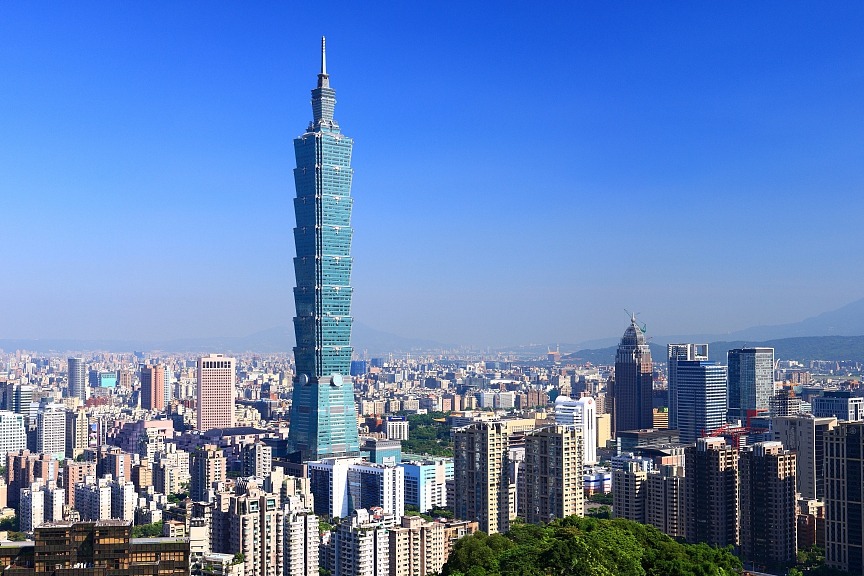CPC Guidelines for Governing Xinjiang in the New Era: Practice and Achievements
The State Council Information Office of the People's Republic of China September 2025

I. Governance of Xinjiang by Past Central Authorities: Philosophies and Experience
Central authorities throughout China's history have consistently upheld great unity in their governance, administering the Xinjiang region as an integral part of the country. They maintained social stability, advanced development, and facilitated ethnic interaction and cultural integration, forging a profound awareness and a firm common conviction that Chinese territory must remain intact, the nation must maintain order, all ethnic groups must remain united, and the civilization must be sustained. Their efforts have contributed to the philosophies and experience for governing the nation's border areas.
Placing the administration of Xinjiang in the overall context of national governance. Xinjiang is China's sacred territory. In 60 BCE, the Han Dynasty (206 BCE-220 CE) established the Western Regions Frontier Command, pioneering the effective jurisdiction and administration over the Xinjiang region by central authorities.
During the period (220-589) from the Three Kingdoms to the Southern and Northern Dynasties, the Former Liang regime established the Gaochang Prefecture in the Turpan Basin, becoming the first to extend the system of prefectures and counties to the Western Regions.
The Sui Dynasty (581-618) established three prefectures — Shanshan, Qiemo and Yiwu — further expanding the system in the region.
The Tang Dynasty (618-907) successively set up the Grand Anxi Frontier Command and the Grand Beiting Frontier Command to administer the vast areas both north and south of the Tianshan Mountains.
During the period of the Liao, Song, Xixia, and Kin dynasties (907-1234), the Liao regime established Prince of the State Office of Yutian Kingdom, Office of the Grand Prince of Gaochang Kingdom, and Arslan Uighur Office of the Grand Prince, thereby exercising effective administration over the Western Regions.
The Yuan Dynasty (1206-1368) implemented the system of administrative provinces in the region, before setting up the Beiting Command and the Pacification Commissioner's Office to manage military and political affairs.
In the Ming Dynasty (1368-1644), the imperial court established the Hami Garrison Command to manage local affairs.
The Qing Dynasty (1616-1911) established the post of Ili General and exercised more systematic administration over the Xinjiang region. In 1884, the Qing court established the region as a province, renaming it Xinjiang, meaning "land newly recovered".
In 1912, following the Revolution of 1911, Xinjiang became a province of the Republic of China.
Throughout China's history, depending on their strengths, imperial dynasties in the Central Plains maintained varying levels of relations with the Western Regions, and their administration of the Xinjiang region differed in intensity. Yet, all imperial dynasties regarded the Western Regions as an inalienable part of their territory, and all exercised jurisdiction over it. Safeguarding national unity has always been a sacred mission of China's central authorities.
Upholding national unity. Since ancient times, the Chinese nation has embraced the ideas of "shared customs and practices and unified governance across the country" and "great harmony under Heaven", considering national unification "a universal tenet between Heaven and Earth, and a constant creed throughout the past and present".
Through measures including establishing administrative systems, building up military defenses, guiding economic growth, and promoting the code of rites and law, central authorities throughout Chinese history continued to strengthen the concept of great unity. Local regimes in the Western Regions also held a strong sense of being an integral part of China, considering themselves either tributaries or vassals of the imperial dynasty in the Central Plains.
During the Han Dynasty, King Yan of Shache, in the Western Regions, often told his son that they must serve the Han court from generation to generation and never betray it. During the Tang Dynasty, various tribes in the northwest honored Emperor Taizong of Tang as the "Heavenly Khan". During the Ming and Qing dynasties, local regimes in the Western Regions — such as the Yarkand Khanate — regularly traveled to the imperial capital to pay tribute on a "golden road".
The enduring tradition of great unity of the Chinese civilization affirms that unification has always been at the core of China's core national interests, and that a strong and unified country is fundamental to the future of all ethnic groups.
Strengthening governance over Xinjiang in line with local conditions. In China, past central authorities attached great importance to the governance of border areas. On the premise of political unity, they adapted to local conditions and administered the region in line with local customs.
From Han Dynasty's Chamberlain for Dependencies, to Court of State Ceremonial in the Tang and Song dynasties, to Commission for Buddhist and Tibetan Affairs in the Yuan Dynasty, to Court of Colonial Affairs in the Qing Dynasty, successive central authorities set up specific agencies to oversee ethnic affairs in border areas.
The Han court strengthened its administration over the Western Regions by conferring titles on and presenting official seals to the heads and officials of local vassal regimes, so as to maintain the ruling order and consolidate central authority.
In the Tang Dynasty, the same system of prefectures and counties as in the Central Plains was applied in the regions of Yizhou, Xizhou and Tingzhou. In areas west of these three prefectures, local tribal leaders, who were granted titles such as prefect or commander-in-chief, would follow the imperial court's orders and carry out its missions by defending the country's territory and sending troops to battles.
In the Qing Dynasty, governance in the region was made more systematic and comprehensive through a mechanism that integrated military and political administration and included the Eight Banners system, the system of prefectures and counties, the Baeg and the Jasak systems.
After Xinjiang was established as a province, the system of prefectures and counties was adopted across the region like the rest of the country.
All the imperial dynasties throughout Chinese history have integrated the maintaining of a unified political order with governing in line with local customs, ensuring efficient and effective administration of Xinjiang by the central authorities.
Vigorously developing and building Xinjiang. Central authorities across all historical periods of China attached great importance to the development and building of Xinjiang. The Han Dynasty sent garrison troops to convert wasteland into arable land in the Western Regions, a practice that was continued and expanded to the whole region during the Tang Dynasty. By the Qing Dynasty, the areas of reclaimed farmlands had exceeded 10 million mu (approximately 667,000 hectares).
Water conservancy projects have also flourished. The Milan Ruins in Ruoqiang County are a well-preserved and relatively intact example of Han Dynasty water conservancy facilities in the region. During the Tang Dynasty, Taotuo water management offices were established, with officials overseeing water conservancy work. The Qing Dynasty promoted extensive water conservancy construction in Xinjiang, dredging rivers and canals and popularizing the karez system — an underground irrigation system primarily in use in arid regions. By the late Guangxu era (1875-1908) of the Qing Dynasty, the total length of canals in Xinjiang had surpassed 35,000 kilometers, with a total irrigation capacity exceeding 10 million mu (approximately 667,000 hectares).
Xinjiang has been a vital hub of the Silk Road since ancient times. Central authorities set up postal stations along key routes to ensure the safety of commercial routes for trade and exchanges. On the Silk Road, envoys and caravans traveled between countries and continents, their activities spanning over a thousand years.
With the booming trade, a number of cities and towns, such as Yutian, Shule, Xizhou, Tingzhou, Huiyuan, and Dihua, were built one after another in Xinjiang, driving economic development and population growth. The continuous development and construction of Xinjiang laid a solid material foundation for effective governance and stability in the border areas.
Advancing ethnic integration and religious coexistence. Central authorities throughout China's history regarded ethnic and religious affairs as a key priority in the governance of Xinjiang. In each historical period, people from diverse ethnic backgrounds migrated to or left the region in large groups. Ethnic groups had grown, developed and integrated with each other despite periods of isolation and conflict, forging a bond thicker than blood and sharing weal and woe together. All of them have made important contributions to exploring, developing, and protecting Xinjiang.
The Liu Pingguo Stele of the Eastern Han Dynasty (25-220) and the 883 Tang-Dynasty documents unearthed from the Keyakekuduke Watchtower site in Yuli County record vivid scenes of people of diverse ethnic groups jointly garrisoning the frontier. In the Qing Dynasty, the court moved military personnel and civilians of various ethnic groups, including the Manchu, Han, Hui, Mongolian (Chahar Tribe), Xibe, and Suolun (Daur), together with their families, to Xinjiang to garrison the border areas and engage in agricultural cultivation, strengthening northwestern border defense.
The Xinjiang region has always been a place where multiple religions coexist, and central authorities all incorporated the management of religious affairs into the national governance system. In the Tang Dynasty, the position of Chief Buddhist Monk was established to supervise Buddhist affairs in the four garrison commands of Anxi: Qiuci, Yutian, Shule, and Suiye. The Qing Dynasty promulgated the Administrative Codex for Xinjiang, stipulating that the Motisebu Baeg should administer Islamic affairs without interfering in civil affairs.
The fact that the Chinese civilization has been forged through the convergence of diverse cultures fundamentally determines the historical trajectory of ethnic interaction and integration, as well as the harmonious coexistence of religious beliefs in China.
Uniting all ethnic groups with the best of traditional Chinese culture. Central authorities across China's historical periods regarded promoting mainstream values and the best of traditional Chinese culture as an indispensable part of governing Xinjiang. The formation and development of Chinese culture could not have been sustained without the Chinese written language. After the Western Han Dynasty unified the Western Regions, the Chinese language and writing system began to be promoted, and has been in continuous use in Xinjiang ever since.
Confucianism has a profound impact on the Western Regions. By the Tang Dynasty, Confucian classics had been widely disseminated — numerous fragmented manuscripts of the Book of Songs, Book of History, Book of Rites, and The Analects of Confucius have been unearthed in archeological excavations in Turpan. Institutions and statutes originating from the Central Plains were implemented in Xinjiang, and Chinese institutions and cultural traditions, including the Rites of Zhou, took root in the region, exemplified by the widespread application of the Statutes and Regulations of the Qing Dynasty.
For a century or so since the mid-19th century, confronted with an unprecedented crisis of national subjugation and extinction, the people of all ethnic groups in Xinjiang, together with their compatriots across the country, united to resist foreign aggression and fight for national survival. This shared struggle elevated the consciousness of national identity among all ethnic groups to a new height.
Since their inception, the cultures of all ethnic groups in Xinjiang have borne the hallmark of unity in diversity of Chinese culture. Chinese culture has always been the harbor and cultural home of all ethnic groups in Xinjiang, as well as the driving force for the development of their respective cultures.
Over 2,000 years, China's central authorities adopted distinct approaches in their governance of Xinjiang across different historical periods. And Xinjiang has always remained an indispensable and vital part of the unified, multiethnic Chinese nation. Objectively speaking, their concepts and measures for governing Xinjiang had some unavoidable shortcomings: Their governance over Xinjiang varied in intensity, and lacked precision and effectiveness. Especially after the mid-19th century, separatist activities instigated and backed by foreign forces occurred from time to time.
History was calling for a true leader capable of leading the Chinese nation to independence, people's liberation, and national rejuvenation. This glorious mission rightfully fell on the Communist Party of China, which was duty bound to fulfill these goals.

































